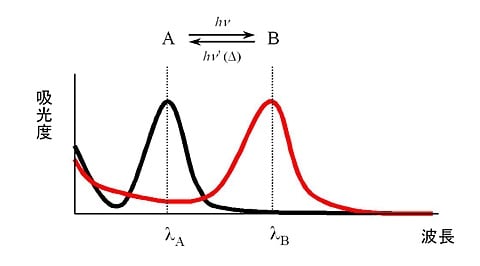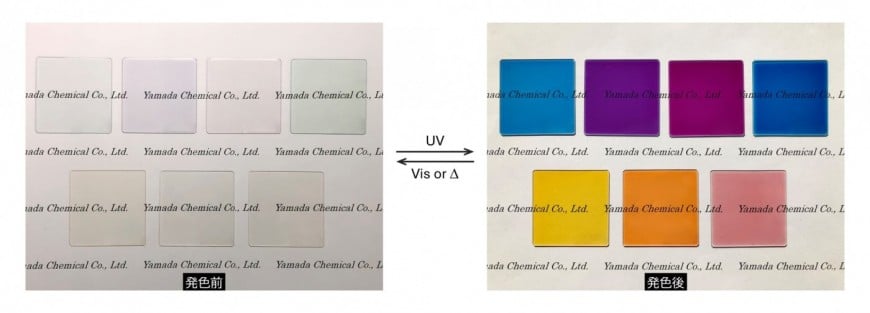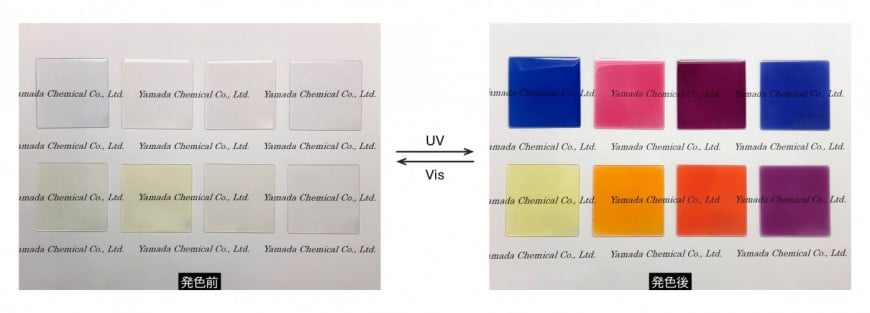Photochromatic Dyes

Photochromism is a phenomenon in which a single chemical species changes its molecular structure under the action of light without changing its molecular weight, reversibly producing two isomers with different colors (absorption spectra).
Photochromic compounds can be broadly classified into two types from the perspective of thermal stability.
Photochromic compounds can be broadly classified into two types from the perspective of thermal stability.
T-type, is a process in which the conversion process is caused by heat other than light. Typical examples are azobenzene and spiropyran.
P-type, is where both isomerization processes occur only with light irradiation and are not changed by heat. Representative examples include diarylethene and fulgide.
Areas of Use
Recording media (optical memory, electronic paper), sensor applications (ultraviolet indicator), light control materials (window glass, sunglasses), etc.
T-type Photochromic Dye
When a spiro compound is irradiated with ultraviolet light or light containing ultraviolet light such as sunlight, it isomerizes from a closed ring form to an open ring form, becoming a metastable merocyanine form and becoming colored.
When exposed to light or heat, the merocyanine body returns to its original stable closed-ring form and discolors.
Utilizing such properties, it is expected to be applied to light control materials.
When exposed to light or heat, the merocyanine body returns to its original stable closed-ring form and discolors.
Utilizing such properties, it is expected to be applied to light control materials.

Colorless/Colored Sample

In addition to the above sample, we have a large number of products in various colors.
P-type photochromic dye
Diarylethene compounds are photochromic dyes that were first synthesized and reported by Professor Masahiro Irie (now Rikkyo University) in 1988.
When irradiated with ultraviolet rays, the open ring forms a closed ring structure, forming a six-membered ring structure that becomes a colored substance.
By irradiating the closed ring with visible light, the ring opens again and returns to its original structure. Applications in various fields are expected by utilizing such optical switching functions.
When irradiated with ultraviolet rays, the open ring forms a closed ring structure, forming a six-membered ring structure that becomes a colored substance.
By irradiating the closed ring with visible light, the ring opens again and returns to its original structure. Applications in various fields are expected by utilizing such optical switching functions.

Colorless/Colored Sample

In addition to the above sample, we have a large number of products in various colors.
[New use]
We also provide materials for research and development of media interfaces.
Professor Tomoko Hashida (currently Waseda University, Faculty of Fundamental Science and Engineering, Department of Expression Engineering)
Professor Tomoko Hashida (currently Waseda University, Faculty of Fundamental Science and Engineering, Department of Expression Engineering)


